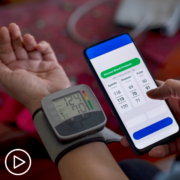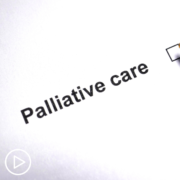What You Need to Know About Accessing CAR T-Cell Therapy
What You Need to Know About Accessing CAR T-Cell Therapy from Patient Empowerment Network on Vimeo.
If you’re interested in CAR T-cell therapy, how can you access this treatment option? Dr. Adriana Rossi details the process, including referral to a CAR T-cell specialty center, and discusses the necessity of a care partner when undergoing this treatment.
Dr. Adriana Rossi is co-director of the CAR T and stem cell transplant program at the Center for Excellence for Multiple Myeloma at Mount Sinai Health System in New York City. Learn more about Dr. Rossi.
See More From Thrive CAR T-Cell Therapy
Related Resources:

Understanding CAR T-Cell Therapy | How It Works and Who It’s Right For |

|

|
Transcript:
Katherine Banwell:
What’s the process for accessing the CAR T?
Dr. Adriana Rossi:
The first important part is remembering they exist and having the referring physician remember to send patients our way. Once patients come to our center, they will meet with coordinators, both the clinic coordinators to make sure we have all of the testing, to make sure the heart is healthy enough, the lungs are healthy enough. There are no infections brewing.
Financial coordinators to take care of all of the organizing. If patients are coming from further than 30 minutes, setting them up for a place to stay in the city, transportation aid, all of those things. Once we decide to go ahead and have our collection date set, that sort of starts the actual process. Since most of our patients have had stem cell transplants before, there is that point of comparison. I think one of the most important things to remember is CAR T is not stem cells.
So, while they’re both the cellular therapies, the patient experience is vastly, vastly different. It starts with a collection, where in stem cells you need several days of injections and maybe several days of collection. T-cell collection is a one-day event. We get what we get and then we are going to manufacture them and we can grow them in a Petri dish. There is no minimum, and there is no instigating injections to get them going.
Once they’re collected, the cells are then sent for manufacturing, which may take from four to eight weeks. During that time, patients usually receive what we call a bridging therapy, which is some kind of therapy to keep the myeloma at bay. Not to get rid of it but to keep it under control so that once the cells are ready the patient is also ready. Going into CAR T with growing myeloma can increase the side effects. Once the cells are ready, then we plan to give chemotherapy to get the patient’s T cells to not put up a fight. That’s called lymphodepletion. We infuse the cells and they’re now with us for two weeks in the hospital and usually two weeks after.
Katherine Banwell:
Okay. So, I was going to ask how long patients are in the hospital for the procedure. So, that explains that. So, it is about two weeks. What signifies that a patient is ready to be released and go home?
Dr. Adriana Rossi:
The reason patients are in the hospital is a very classic expected toxicity experience. So, they’re in the hospital for us to observe, watch. If it happens, which about 80 percent of the time there will be some toxicity for us to address – once that toxicity has resolved, they’re then okay to go home.










